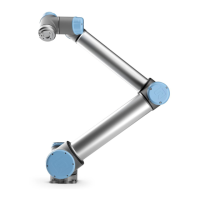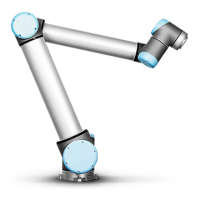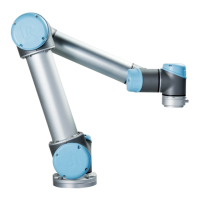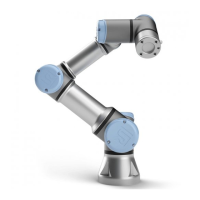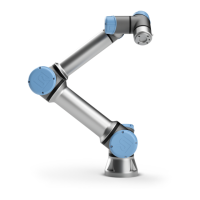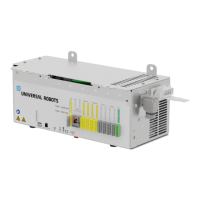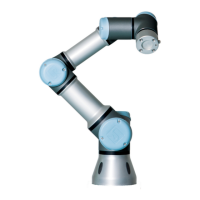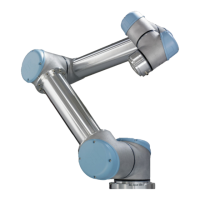WARNING
Failure to consider the added risks of a longer reach, higher payloads and
greater operating torques and speeds associated with a bigger robot, can
result in injury or death.
•
Your risk assessment shall include the additional reach, payload and
speed risks.
2.1.7. Risk Assessment
The risk assessment is a legal requirement, that shall be performed by a 3rd party
integrator, or by the user of the UR robot in the role of integrator.
The robot itself is partly completed machinery, as the safety of the robot installation
depends on how the robot is integrated (E.g. tool/end effector, obstacles and other
machines). It is recommended that the party performing the integration use ISO 12100 and
ISO 10218-2 to conduct the risk assessment. Integration can apply Technical Specification
ISO/TS 15066 as additional guidance. The risk assessment shall consider all work tasks
throughout the lifetime of the robot application, including but not limited to:
•
Teaching the robot during set-up and development of the robot installation
•
Troubleshooting and maintenance
•
Normal operation of the robot installation
A risk assessment must be conducted before the robot arm is powered on for the first time.
A part of the risk assessment conducted by the integrator is to identify the proper safety
configuration settings, as well as the need for additional emergency stop buttons and/or
other protective measures required for the specific robot application.
Identifying the correct safety configuration settings is a particularly important part of
developing collaborative robot applications. See chapter2.2. Safety-related Functions and
Interfaceson page23 and partPart II PolyScope Manual for detailed information.
Some safety functions are purposely designed for collaborative robot applications. These
features are configurable through the safety configuration settings and are particularly
relevant when addressing specific risks in the risk assessment conducted by the integrator:
•
Force and power limiting: Used to reduce clamping forces and pressures exerted
by the robot in the direction of movement in case of collisions between the robot and
the operator.
•
Momentum limiting: Used to reduce high transient energy and impact forces in case
of collisions between robot and operator by reducing the speed of the robot.
User Manual 19 UR16e
2.Part I Hardware Installation Manual
Copyright © 2009–2024 by UniversalRobotsA/S. All rights reserved.

